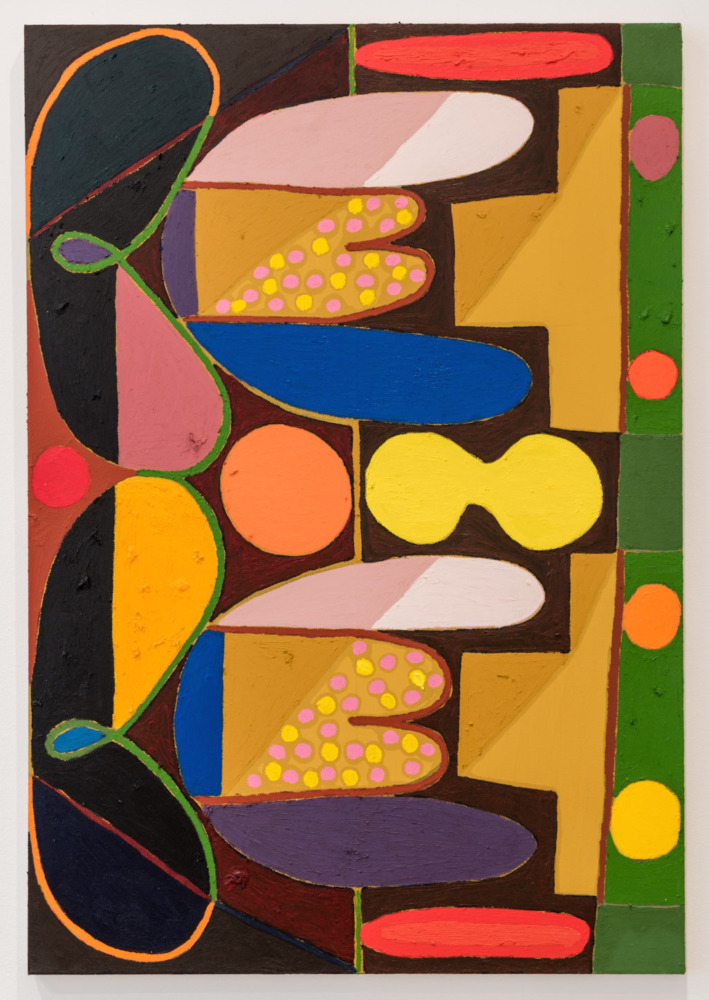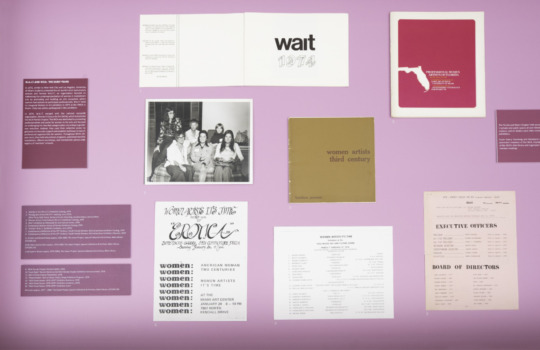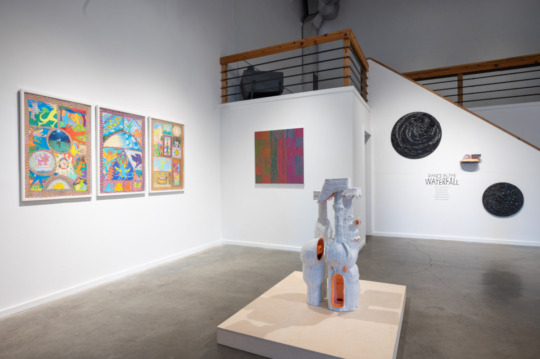
Many years heaped upon years ago, when I first came across some of the more extreme ideas and art posited by postmodernism, my first reaction was honest bewilderment followed by unease. In my youth, I embraced art via romanticism and I idolized the modernist heroes with their fearless idealism and unfiltered passions. I also came from a music background, where expression and catharsis are not considered critical dirty words. Postmodernism’s more extreme positions essentially told me that all I believed was a lie and that I was a backwards fool to have believe any of it. But what did postmodernism offer in its place? Most often it was an untethered nothing, a deep cynicism, and a sense of emptiness. While today I recognize that there are some points in postmodernism that have merit, I still, at times, walk away with the sour taste of nihilism in my mouth. Postmodernism is essentially the aesthetics of giving up; it can be summed up in one word: doubt. It was born of the perceived failure of art and artists to change the world. After the peaceful revolutions of 1968 collapsed (and other events, such as the continued war in Vietnam, the assassinations of Martin Luther King and Robert Kennedy, the Kent State shootings, and Watergate) many found their idealism shattered. The few zealots who survived, like the RAF and the Weather Underground, retreated to the shadows, their idealism turning violent.
Many years of my own life experience later, I understand the postmodern proclivity toward pessimism, skepticism, and doubt. The disappointments have piled high. Half of the time, I am a glass-half-empty kind of person. I see that it is too late for me to be able to retreat back to modernism, like so many a Remodernist or Stuckist have attempted to do, but even if we could, would we even want to? As much as I would like to devote myself full-tilt to an ideal, critical thought and a newfound deconstructionist tendency has changed that part of me, and I’ve found this critical thought to be, sometimes, a good thing.
Deconstruction can be healthy. It is good to reevaluate ourselves from time to time and take things apart, but I never cared for many of the conclusions that postmodern deconstruction offered as a result. Deconstruction allows us to acknowledge our faults and biases (and there were many in modernism, namely a lack of inclusion), and while we still have much work to do in the way of inclusion, I am optimistic that it may soon be time to think about a new direction for art. Deconstruction is a surgery performed on an anesthetized body; all motion and progress becomes impossible in this state. We have spent time taking things apart; now I think it may be time to try to start putting things back together, to start moving on. There remains an old guard of postmodernists, however, that would have us coldly dwell on our fractured state and failures, or worse, celebrate it with a calculated kind of nihilism. And this is where I break.
I am no stranger to disappointment and fits of pessimism. I’ve passed through dark existential places of the mind and I expect I will pass through them again . . . but I cannot live in postmodern darkness nor will I cover myself in a cloak of insincerity as a result. After being knocked down, I inevitably find myself getting back up, with my idealism intact. I don’t know whether it is something akin to what Schopenhauer would call “the will,” to chalk it up to blind sense of naiveté, or maybe to something else entirely. What I do know is that my life and my art lately seem to be defined by a vacillation between a number of different extremes, hope and disillusionment being a prime example. I’ve also come to recognize that this condition conforms to ideas put forth in a new cultural philosophy/phenomenon called metamodernism, and that it may be a rich possible replacement for the dying postmodern zeitgeist.
Our current understanding of the term metamodernism dates back to 1999, where the ideal and aim was, according to artist and art historian Moyo Okediji, to “transcend, fracture, subvert, circumvent, interrogate and disrupt, hijack and appropriate modernity and postmodernity.” Soon it was determined that the metamodernist’s relationship with modernism was to be more than an empty pastiche or even a homage, but rather a new critical reengagement with modernist methods. By 2010, with the publication of cultural theorists Timotheus Vermeulen and Robin van den Akker’s Notes on Metamodernsim, metamodernism was posed as a replacement for the skepticism, doubt, and insincerity of postmodernist thought and practice. Perhaps not coincidentally, this occurred during the early years of Barack Obama’s presidency and his being awarded the Nobel Peace Prize. Although the term metamodernism was not a word used in my circles during this time, I recall that the conversations, both public and private, took on a new and curious tone. Many people were buying into the idea that for the first time in a long time there may be hope, and that “yes, we can change.” While skepticism and doubt have returned, to a certain degree, it turns out that this oscillation between two poles is exactly what is described as the metamodernist condition in Vermeulen and van den Akker’s paper.
According to the authors, metamodernism is a “structure of feeling” that oscillates between modernism and postmodernism like “a pendulum swinging between . . . innumerable poles.” It is the struggle between skepticism and belief, which produces a “kind of informed naivety, a pragmatic idealism.” Postmodernist positions are not wholeheartedly abandoned; they stay with us, but they are understood and accepted as the kind of break Sisyphus might take after so many years of having failed to push the boulder up the hill. Sure, you’ll cry a bit, but you don’t walk away from the task, you don’t give up. You get back up and carry on because there is a delusion or belief that some remote day the world could live up to our ideals, despite what we know to be the overwhelming odds and the centuries of experience of failure behind us. Failure isn’t inevitable. We may never see the fruits of our labor, but with metamodernism the ideals of progress, of grand narratives, of ecstatic truths, and momentum are once again restored while “the postmodern culture of relativism, irony, and pastiche” are seen to be over.
Vermeulen and van den Akker argue that the metamodernist attempts at finding truth, beauty, and meaning through struggle constitute a reemergence of a romantic sensibility in the arts. Like metamodernism, “the Romantic attitude can be defined precisely by its oscillation between these opposite poles . . . Romanticism is about the attempt to turn the finite into the infinite, while recognizing that it can never be realized . . . that it should forever be becoming and never perfected.” This oscillating between attempt and failure, enthusiasm and irony is, of course, the origin of the Romantic inclination for the tragic and sublime, which may just be the common denominator and defining characteristic for the human condition (my area of interest).
Strangely enough, failure need not be a bad thing. In Notes on Metamodernism, Vermeulen and van den Akker state that “metamodernism moves for the sake of moving, attempts in spite of its inevitable failure; it seeks forever for a truth that it never expects to find.” Using the donkey-and-carrot-double-bind dilemma as an example, we know that the donkey chases a carrot that it will never manage to eat because the carrot will forever be just beyond its reach. But, “it is precisely because it never manages to eat the carrot, it never ends its chase, setting foot in moral realms the modern donkey (having eaten its carrot elsewhere) will never encounter, entering political domains that the postmodern donkey (having abandoned the chase) will never come across.”
In 2011, Luke Turner published the Metamodernist Manifesto. In it we read that oscillation is “the natural order of the world” and the call for an end to “the inertia resulting from a century of modernist ideological naivety and the cynical insincerity of its antonymous bastard child.” The manifesto further proposes that metamodernism is “the mercurial condition between and beyond irony and sincerity, naivety and knowingness, relativism and truth, optimism and doubt, in pursuit of a plurality of disparate and elusive horizons.” Like Vermeulen and van den Akker’s Notes on Metamodernism, the Metamodernist Manifesto embraces failure as an experience with positive potentiality: “We acknowledge the limitations inherent to all movement and experience, and the futility of any attempt to transcend those boundaries set forth therein,” nevertheless “Existence is enriched if we set about our task as if those limits might be exceeded.”
I was about to be fully committed to the metamodernist ideal until I read later in a 2014 interview that Luke Turner credits the Metamodernist Manifesto to actor Shia Labeouf, as part of their ongoing collaborative efforts. This was hard to swallow: sincerity, promoted by a man who makes a living pretending to be other people, most notably in the Transformers movie franchise, and who has on many occasions been accused of plagiarism in his graphic novels and subsequent apologies. But actors are not necessarily insincere, of course, no more than visual artists, and I’m not ready to give up on metamodernism. In fact, it could be argued that this skepticism of Shia Labeouf and the step back from metamodernism is true to the metamodernist condition as described by Vermeulen and van den Akker, which is further oscillation. Skepticism has a proud and noble history in philosophical thought, but we shouldn’t let it cloud our curiosity.
At the moment metamodernism isn’t so much a philosophy with a motive – implying a hierarchy – but is, in Vermeulen’s words, “an attempt at a vernacular, or… a sort of open source document, that might contextualise and explain what is going on around us, in political economy as much as in the arts.” And I’m fine with that; we don’t need another hierarchy. Postmodernism, with its many antimodernist postures, could arguably be seen as a hierarchy disguised as an expanded field, at least when it is protected within art institutions and their designed interests. Postmodernism expanded what art could be, and mostly for the better, but it is my hope that metamodernism will take art in new directions, directions the postmodernists never dared to go. Perhaps this new art will foster a renewed willingness to believe and to trust, to reflect the ideals of genuineness and sincerity, and open itself up to more candid expressions of the human condition. It doesn’t have to always be serious art — far from it — but an art that is made by artists who are honest with themselves and their audience, made with less caution, cynicism, and doubt. Perhaps metamodernism will provide the path and momentum towards this new art.




